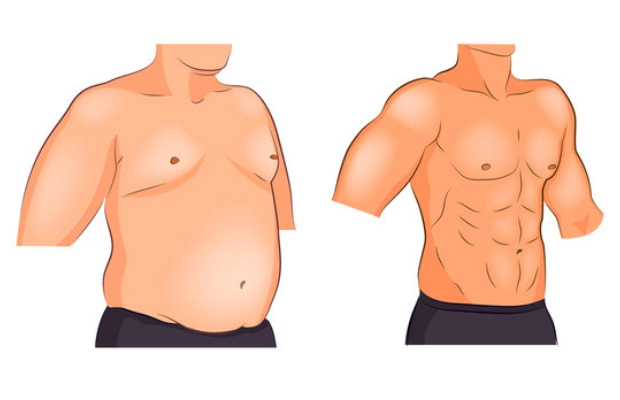Male chest surgery, often associated with gynecomastia treatment, is a procedure that helps men achieve a more defined and masculine chest. Whether you’re dealing with enlarged breasts due to hormonal imbalances, weight gain, or genetics, male chest surgery offers a safe and effective solution. However, preparing for the surgery is essential for achieving the best possible outcome. In this guide, we’ll walk you through a step-by-step process on how to properly prepare for male chest surgery, ensuring a smooth and successful procedure.
1. Consultation with a Qualified Surgeon
The first and most important step in preparing for male chest surgery is to schedule a consultation with an experienced and qualified surgeon. During this meeting, Dr. Sagar Daiv, a highly skilled cosmetic surgeon, will assess your chest, medical history, and overall health to determine if you’re a suitable candidate for the procedure. It is crucial to be open and honest during the consultation to help your surgeon understand your expectations and ensure the best results.
Dr. Sagar Daiv will evaluate the extent of the gynecomastia, whether it’s caused by excess fat, glandular tissue, or both. Based on the assessment, he will suggest a customized treatment plan that aligns with your goals and the structure of your chest.
2. Pre-Surgery Health Evaluation
Once you have decided to go ahead with the surgery, you will undergo a pre-surgery health evaluation. Your surgeon may request medical tests such as blood work, a physical exam, and possibly a mammogram, to make sure you’re fit for surgery. This helps rule out any underlying conditions that could interfere with the procedure or recovery.
It’s essential to disclose any medications you’re currently taking, including over-the-counter supplements and herbal products, as some medications can affect blood clotting or interact with anesthesia.
3. Follow Pre-Operative Instructions
Your surgeon will provide you with detailed instructions on how to prepare for the surgery. These instructions are vital for ensuring a smooth procedure and recovery. Common pre-operative guidelines include:
- Avoiding certain medications: Some medications, especially blood thinners like aspirin or ibuprofen, must be stopped weeks before surgery to reduce the risk of excessive bleeding.
- Fasting before surgery: Typically, you will need to fast for 8-12 hours before your procedure. This is to ensure your stomach is empty when anesthesia is administered, reducing the risk of complications.
- Quit smoking and alcohol: Smoking and alcohol can interfere with the healing process and increase the risk of complications. If you smoke or drink, it’s best to quit at least two weeks before surgery and during recovery.
Dr. Sagar Daiv will explain these steps in detail to ensure you’re fully prepared and have a smooth recovery process.
4. Arrange for Post-Surgery Care
Although male chest surgery is relatively straightforward, it’s important to plan for post-surgery care. You won’t be able to drive immediately after the procedure, so you’ll need to arrange for someone to drive you home. It’s also helpful to have a friend or family member stay with you for the first 24-48 hours following surgery to assist with daily activities.
Additionally, you should prepare your home for a comfortable recovery by having essentials such as prescribed medications, loose clothing, and a comfortable resting area ready. Dr. Sagar Daiv will provide you with post-surgery guidelines that will help you avoid common complications and promote a quicker recovery.
5. Understand the Procedure and Set Realistic Expectations
One of the most important things to do when preparing for male chest surgery is to understand what to expect during and after the procedure. Dr. Sagar Daiv will walk you through the entire process, from anesthesia and the surgery itself to recovery. Having a clear understanding of the procedure will help ease any anxiety and allow you to set realistic expectations.
Male chest surgery typically involves liposuction and/or the removal of excess glandular tissue. The procedure usually lasts 1-2 hours, and the recovery time is relatively quick, with most patients returning to work and normal activities within a week. However, you should be prepared for some swelling and bruising, which should subside in a few weeks.
6. Prepare Mentally for the Recovery Process
Mental preparation for the recovery process is just as important as physical preparation. Male chest surgery requires a few weeks of rest and limited activity to ensure proper healing. During this time, you should refrain from strenuous exercises, heavy lifting, or activities that could strain your chest muscles.
You may also experience temporary discomfort, swelling, or numbness in the chest area. This is normal and should gradually improve. Keeping a positive mindset during recovery and following Dr. Sagar Daiv’s advice is crucial for ensuring the best results.
7. Post-Surgery Care and Follow-Up Appointments
After your male chest surgery, Dr. Sagar Daiv will schedule follow-up appointments to monitor your healing progress. During these visits, your surgeon will ensure that everything is healing properly and address any concerns you may have. You will also receive instructions on how to care for your chest, including wearing compression garments to reduce swelling and support healing.
It’s important to attend all follow-up appointments to ensure optimal results and catch any potential issues early.
Conclusion
Preparing for male chest surgery is a crucial step toward achieving the chest contour you’ve always desired. By following these steps and seeking care from a skilled surgeon like Dr. Sagar Daiv, you can ensure a successful procedure and a smooth recovery. If you’re ready to take the next step, schedule a consultation with Dr. Sagar Daiv today to learn how male chest surgery can transform your appearance and boost your confidence.

